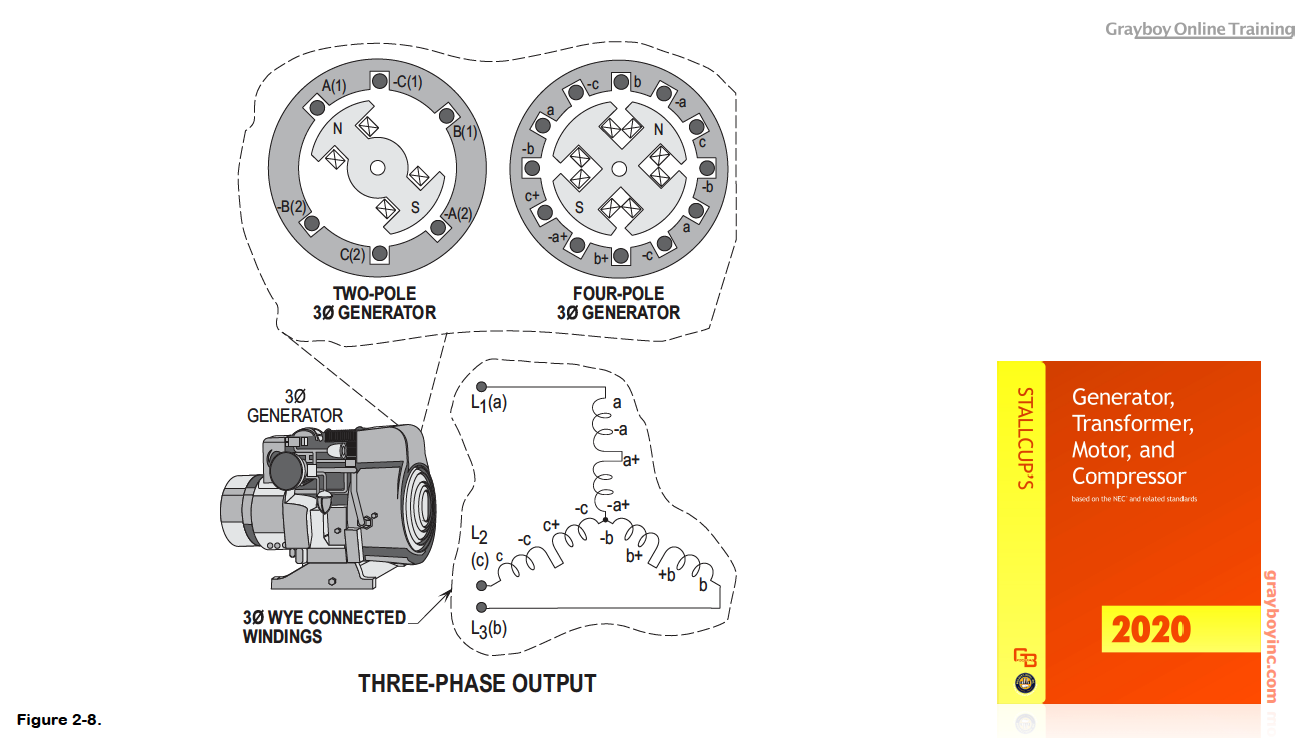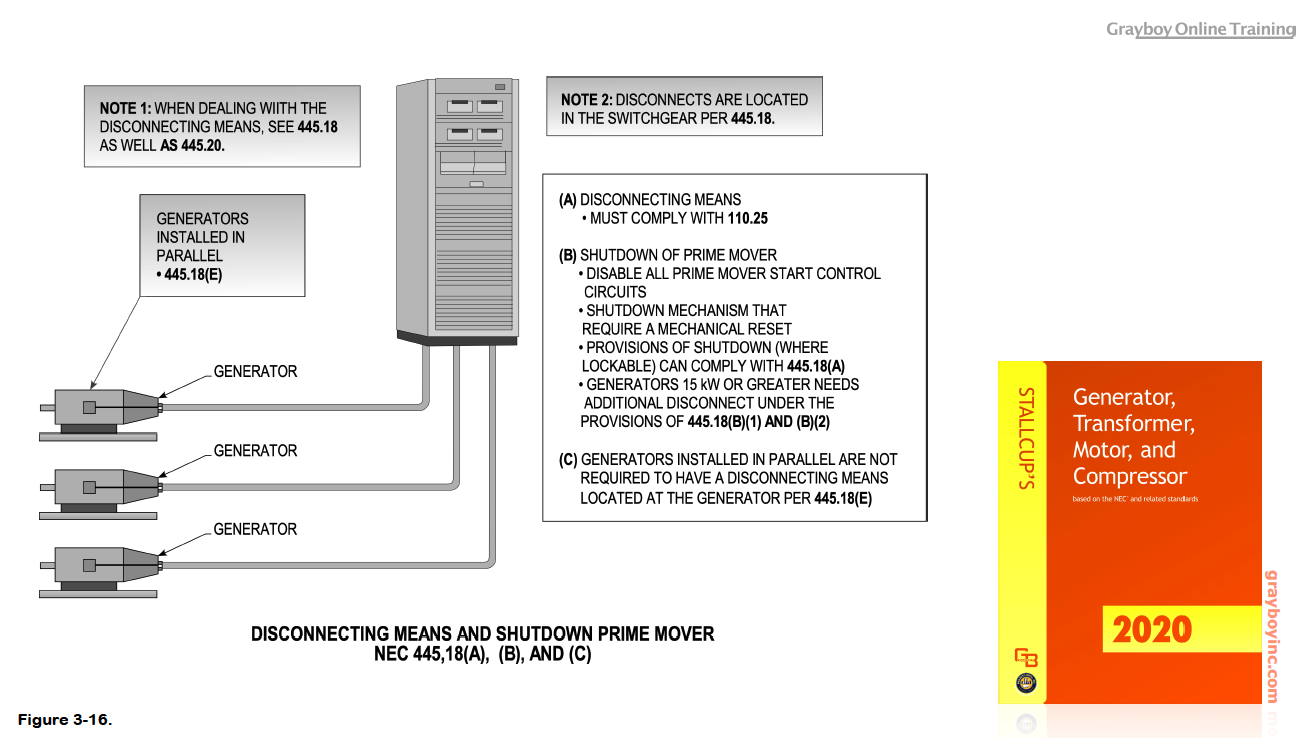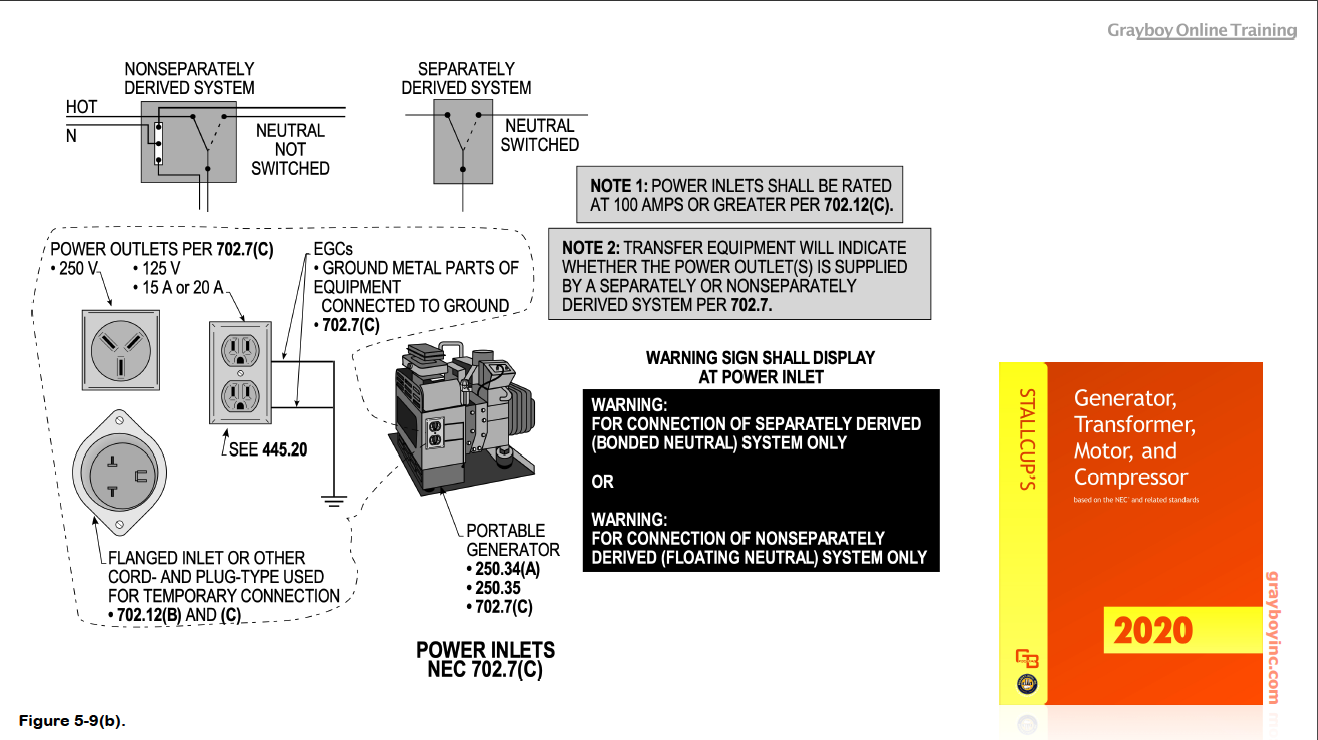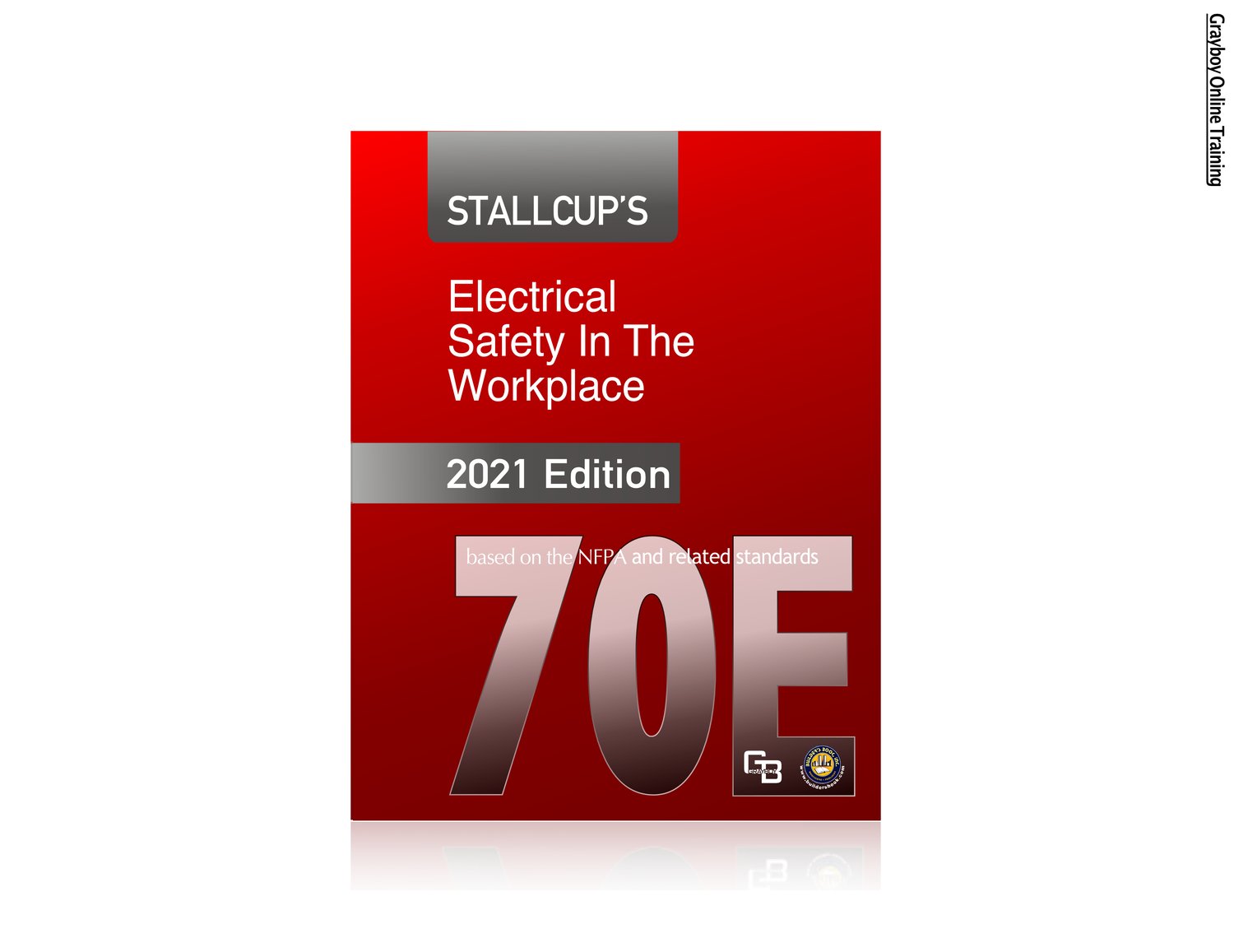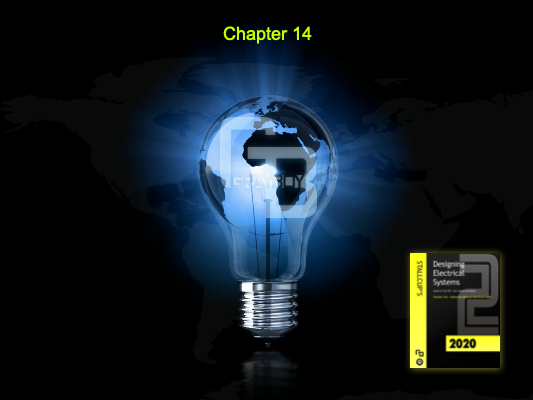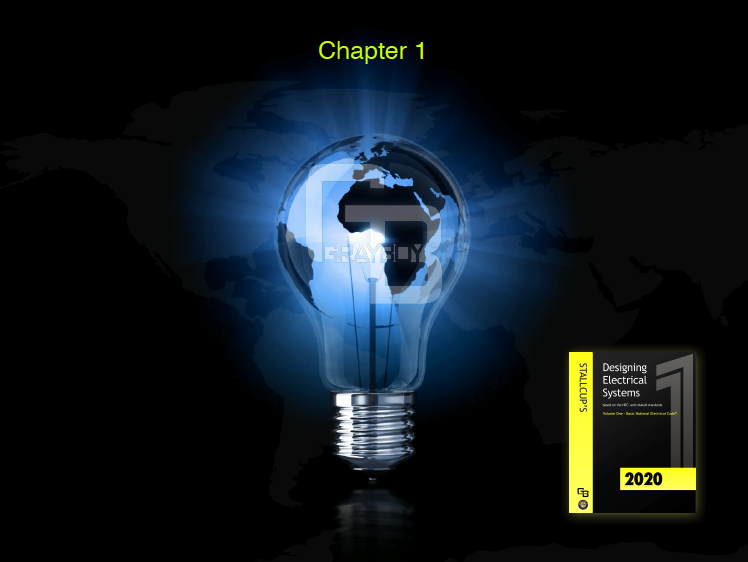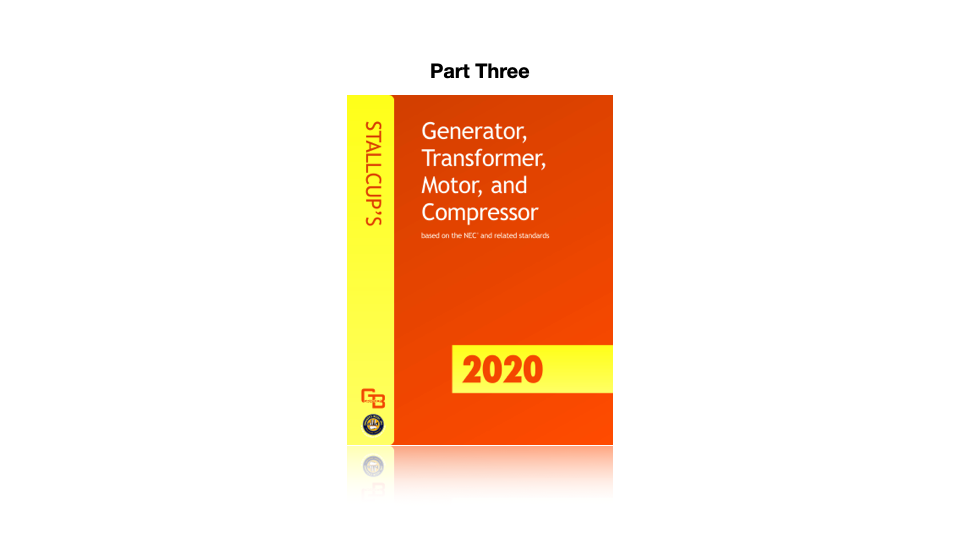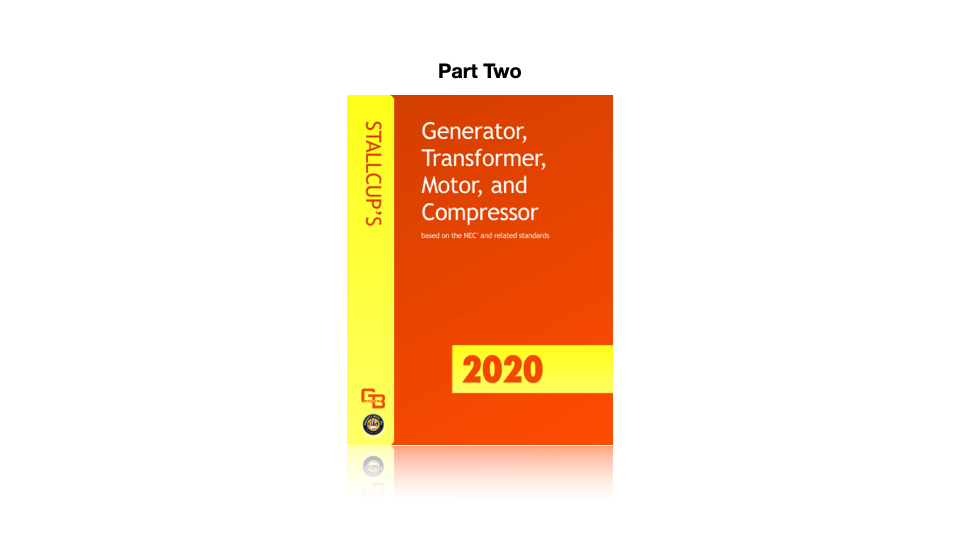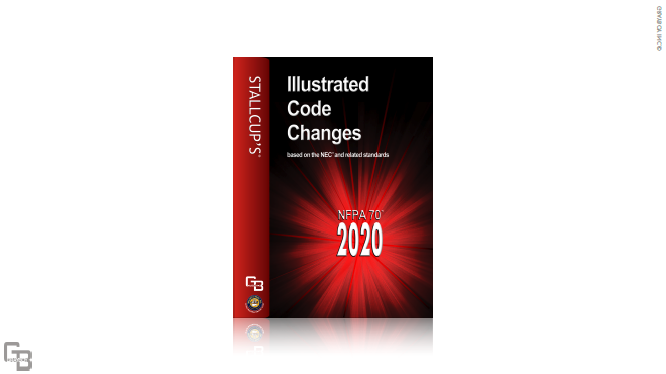Stallcup's GTM&C Generators Part 1 - 2020 Presentation
On Sale
$73.56
$36.78
Use the following coupon code at checkout for 45% off all products. Coupon Code: 22GB45
Generators
Chapter's 1-6
Number of Slides: 107
Part I covers the theory of generators, the various types, and the rules and regulations of the National Electrical Code® pertaining to their design and installation
From the small standby unit to the largest hydroelectric plant, today’s world demands speed, light, and power. The generator is the device that converts mechanical energy into electrical energy and supplies power where needed. The generator can be designed and installed to provide the starting point for power to an electrical service, as well as the backup power when things go wrong.
Engine-driven generators that are fueled by diesel, gasoline, or natural gas commonly produce and provide alternative emergency or standby power when normal power systems fail. Gas-turbine generators are also used to create such power.
A facility with engine-driven generators provides the necessary power for human safety as well as the protection of property, while maintaining continuous operation of specific types of equipment.
The design requirements for selecting an on-site generator differ depending upon the generator's use.
For example, generators can be utilized as emergency systems, standby power systems, or other power sources when used in health care facilities.
A portable generator can provide power for construction, remodeling, maintenance, or making repairs on equipment.
Generators
Chapter's 1-6
Number of Slides: 107
Part I covers the theory of generators, the various types, and the rules and regulations of the National Electrical Code® pertaining to their design and installation
From the small standby unit to the largest hydroelectric plant, today’s world demands speed, light, and power. The generator is the device that converts mechanical energy into electrical energy and supplies power where needed. The generator can be designed and installed to provide the starting point for power to an electrical service, as well as the backup power when things go wrong.
Engine-driven generators that are fueled by diesel, gasoline, or natural gas commonly produce and provide alternative emergency or standby power when normal power systems fail. Gas-turbine generators are also used to create such power.
A facility with engine-driven generators provides the necessary power for human safety as well as the protection of property, while maintaining continuous operation of specific types of equipment.
The design requirements for selecting an on-site generator differ depending upon the generator's use.
For example, generators can be utilized as emergency systems, standby power systems, or other power sources when used in health care facilities.
A portable generator can provide power for construction, remodeling, maintenance, or making repairs on equipment.



